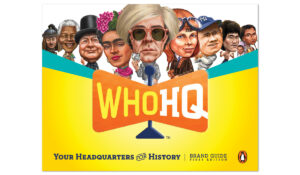 Is an eight-year-old child too young to learn that millions of human beings were enslaved in this country for almost 250 years?
Is an eight-year-old child too young to learn that millions of human beings were enslaved in this country for almost 250 years?
Is it okay for her to look at drawings of slave ships, where dark-skinned people kidnapped in Africa were chained together by their captors and packed in so tightly that many of them suffocated, while others died of disease or starvation in their long journey across the Atlantic Ocean? Is it okay for her to see pictures of plantation houses and tobacco fields and slave cabins? Is it okay for her to read about auction blocks and chain gangs and overseers with whips?
If your answer to these questions is no, then don’t let that child get her hands on a copy of “Who was Harriet Tubman?” by Yona Zeldis McDonough. It’s one in a series of “Bobblehead Biographies” (so nicknamed because of the cover art) for children, published by WHO HQ books. I’ve read several of these biographies. All were excellent.
My granddaughter June, who just finished second grade, had bought her own copy of the Harriet Tubman book and wanted to read it to me during a recent visit. Of course, I said yes. Here was a chance not only to snuggle with June (and her cat) while encouraging her literary journey, but also to talk about some shameful truths from American history, if she wanted to.
She did.
How, she asked, could some people be so cruel? How could some people be so brave? And the big question: How could anybody believe it was alright for one human being to own another? I answered her questions as sensitively and honestly as I could. And then I asked June some big questions. Are you sorry you bought this book? Do you wish we hadn’t read it? Would you rather not know about some of the terrible things that have happened in the past?
She told me the book made her feel sad but that she wasn’t sorry she’d read it. In fact, she would–for sure!–read it again. We have to learn from bad things that happened so we won’t let them happen again, she said.
Which brings me to the subject of Juneteenth, which will be observed as a federal holiday this coming Monday. It’s a day many of us knew little about until recently, though it’s long been celebrated as “Emancipation Day” in Texas. On June 19, 1865—two-and-a-half years after Abraham Lincoln issued the Emancipation Proclamation and more than two months after Robert E. Lee’s surrender at Appomattox Courthouse—enslaved people in Texas found out they were free. The unexpected news was announced by 2,000 Union troops who’d arrived in Galveston. A quarter of a million persons suddenly learned that they now belonged only to themselves.
Of course, “free” is a relative term. The Civil War was followed by a disastrous Reconstruction period and by decades of oppression and discrimination that went largely unacknowledged until the Civil Rights movement of the 1950s and 60s.
It’s a struggle that continues and one that young people of all races must learn about and take to heart. Governors and state legislatures and school boards and parent groups that wish to sweep historical truths about race and other uncomfortable subjects under the rug aren’t doing our children any favors. Quite the contrary. The more our kids (and adults) know about Harriet Tubman and Frederick Douglass and Sojourner Truth and Jesse Owens and Jackie Robinson and Rosa Parks and Martin Luther King, Jr. and a whole host of other African-American heroes who tirelessly worked for positive change in this country, the better.
They can learn about these people (and dozens more) in the “Who Was” book series. Hooray for that. Because in the words of one of my favorite eight-year-olds, “We have to learn from bad things so we won’t let them happen again.”
(June 17, 2023)